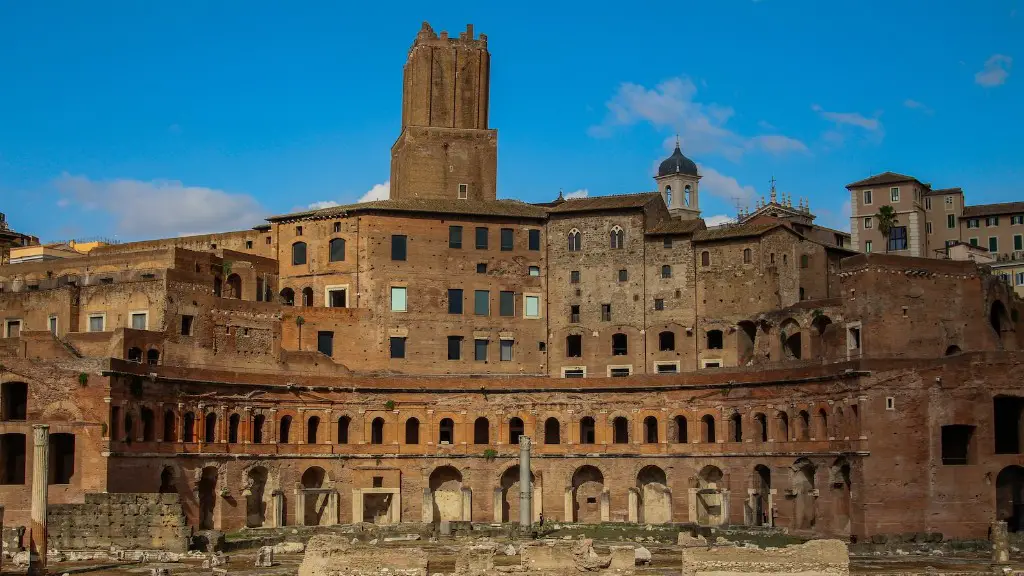The most unique part of road construction during ancient Rome was the composition of their material. Rocks of varying sizes and shapes would be taken and put in layers. The lower layer was made of larger rocks and other stones, while the upper layers consisted of smaller stones and materials such as broken pieces of tile.
The upper layer was intended for protection and waterproofing, so that every time it rained, the water would not penetrate too deep and damage the road. The roads were also filled with sand and gravel, in order to make them more even and stable.
What makes the aggregate mix even more impressive is that it was often used as a binding agent to hold together the surface materials. Roman roads were known to be very hardy and resilient, and this was precisely due to the fact they used aggregate mix as a binding agent. And surprisingly, this same technique is widely used even today.
One of the key ingredients of the Roman’s aggregate mix was a type of lime that was often found in the nearby hills. This type of lime was particularly beneficial for binding and waterproofing the roads. It was also used to make plaster and mortar, which were essential for the construction of buildings.
The main reason why the Romans developed such an effective aggregate mix was because it was strong and durable yet easily repairable. If a road was damaged or worn down, it could be easily filled in with the same material it was originally made of. This made road maintenance much easier and it is one of the main characteristics of Roman roads that has been maintained until today.
The aggregate mix was also used in road construction throughout Europe, the Middle East and even parts of Asia. It has been a reliable method of constructing roads for centuries, and its popularity shows no sign of waning.
Material Usage
The aggregate mix used by the Romans was composed of many different materials. Rocks and stones of various sizes and shapes were combined in layers, and there were also other materials such as tiles, gravel and sand that were used to create a more stable and even road.
The main binding agent for the aggregate mix was a type of lime which was found in the nearby hills. This type of lime was particularly beneficial for binding and waterproofing the roads. It was also used to make plaster and mortar, which were essential for the construction of buildings.
The aggregate mix used by the Romans was also to some extent fireproof and impenetrable. Fire was a common problem in ancient Rome, so it was important that the roads were able to withstand any potential damage.
Maintenance and Repair
The most impressive feature of the aggregate mix used by the Romans was its ability to be maintained and repaired. If a road was damaged or worn down, it could be easily filled in with the same material it was originally made of. This made road maintenance much easier, and it is one of the main characteristics of Roman roads that has been maintained until today.
Roman engineers were also able to use their aggregate mix to construct bridges and culverts which enhanced the efficiency of the road network. This was made possible by the fact that the roads were able to be repaired quickly and easily, and the aggregate mix allowed for the construction of bridges which could last for centuries.
Modern Usage
The same type of aggregate mix used by ancient Romans is still used today in road construction. It is not only popular in Europe and the Middle East, but it is also used in many parts of Asia where the technology is not as advanced as it is in other parts of the world.
The main advantages of using an aggregate mix are its strength, durability, and its ease of maintenance and repair. This is why it has remained popular even in this day and age.
Environmental Impact
One of the main advantages of aggregate mix is that it is generally quite environmentally friendly. It is made from natural materials, and its use does not require large amounts of energy or resources.
The greatest environmental impact from aggregate mix is usually from the transportation of materials from the quarry to the construction site, but even this can be minimized by sourcing the materials from local quarries.
The use of aggregate mix for road construction also doesn’t produce any harmful emissions, so it can help to reduce the environmental impact of road construction.
Economic Factors
One of the main advantages of aggregate mix is its cost effectiveness. The materials used are generally quite inexpensive, and the aggregate mix itself produces very few waste materials.
This means that it is much cheaper than using more expensive materials such as asphalt or concrete. In addition, using an aggregate mix reduces the need for large amounts of skilled labor, which further decreases the overall cost of construction.
Conclusion
The aggregate mix used by ancient Romans had many advantages. It was strong and durable, yet easily maintained and repaired. It was also relatively inexpensive and environmentally friendly, making it an excellent choice for both road construction and building projects. Today, this same technique is still widely used due to its numerous advantages.

